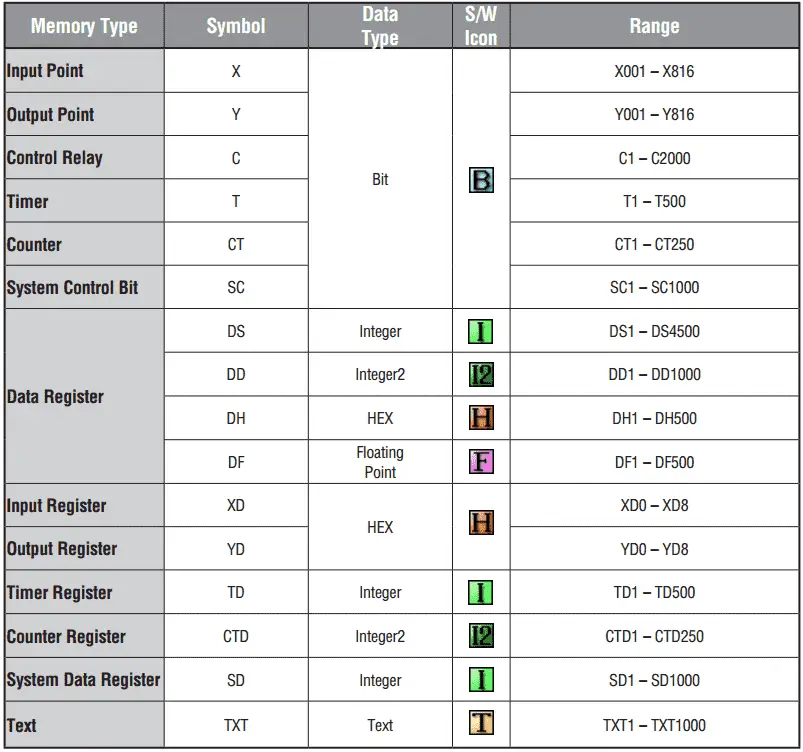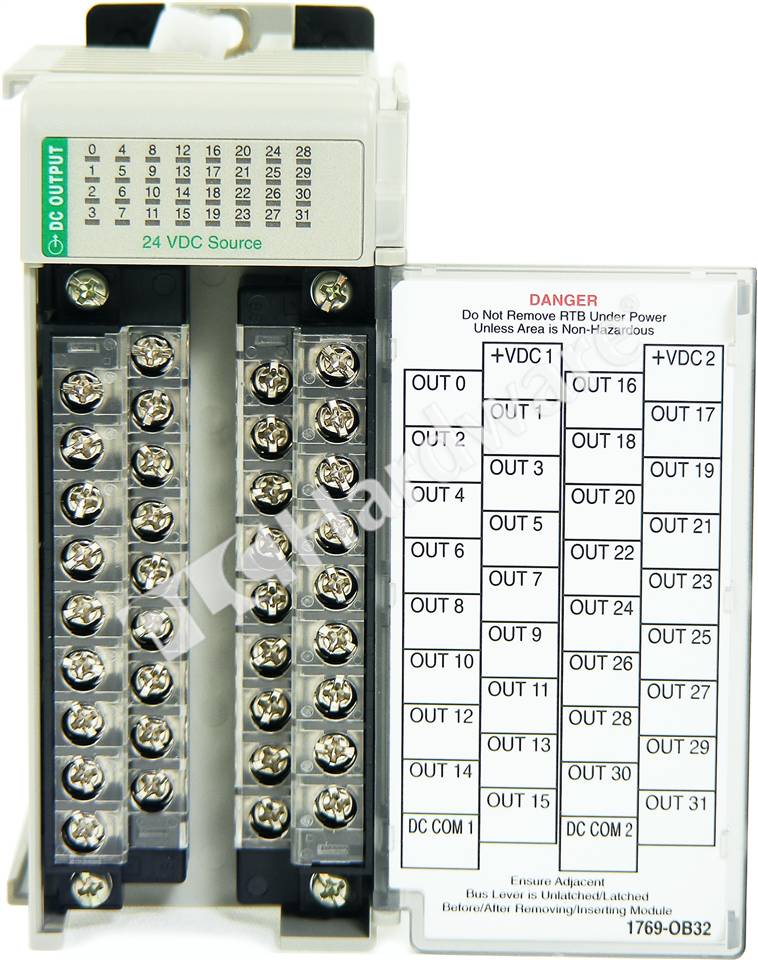Plc Slot Numbering
3/27/2022 admin
Physical Connections
This video is a demo on how to change a card in a Compactlogix PAC rack. These are addressed as X:ss.ww/bb, where X is either I or O, ss is the slot number, ww is the word within the slot, and bb is the bit. An example would be I:1.1/15. This could be the last point of a 32 point input card, or a single bit of an analog input. Note that I:1/15 is equivilant to I:1.0/15. Remove and lock out input power from the controller and I/O before any PLC installation and wiring begins. Verify that all modules are in the correct slots. Check module type and model number by inspection and on the I/O wiring diagram. Check the slot location according to the I/O address assignment document. PLC5: The PLC5 processor has it's own dedicated place in the 1771 chassis on the left, and is not called a 'slot' at all, the following module locations are 'slots' and are sequentially numbered, starting at 0, according to the rack-addressing mode. Playtech plc is a gambling software development company founded in 1999. The company provides software for online casinos, online poker rooms, online bingo games, online sports betting, scratch games, mobile gaming, live dealer games and fixed-odds arcade games online.
Most PLC connections involve connecting to something like the terminal block shown on the right.
Slide the wires into the slots on the bottom, and using the screws found on top, you secure the wires. Some connectors are like the one shown, and disconnect from the PLC, while others are fixed to the the PLC.
This kind of connection is common for Inputs, Outputs and power supplies.
Internal Connections
The inputs and outputs of PLCs are connected internally in 1 of 3 ways: Relays, Source or Sink. PLC manufacturers often produce all 3 versions, so you can select the version that best fits your application. Below are descriptions of each variety and what their advantages/disadvantages are.
Lets go over a couple symbols that will be used.
DC Power
Switch. It represents an input. Could be as simple as a light switch that you’re monitoring to see if it’s on or off.
Load. It represents something you’re powering. Could be a light bulb or motor.
Juggling balls. (just kidding) Connections. They are the physical connections to the PLC discussed at the top of this page.
PLC. This just tells you where the PLC fits into the equation. Everything inside the dashed box happens inside the PLC.
Power Flow. Shows which direction power flows through the circuit.
Commons
In order to increase IO points on PLCs without increasing the number of connections, Commons are used. The picture to the right shows an example of what the wiring of a PLC with 4 inputs would look like. In the picture Without Common, the green points all lead to the same voltage source. Commons take advantage of this frequent situation, grouping one side of connections together. In this case we go from requiring 8 pins to requiring 5 pins, with no loss of functionality (assuming you wanted them tied to the same sources). Commons are used in Relays, Sink and Source Circuits.
Relays
Relays are the simplest Connection type. They act like light switches that are turned on or off by the PLC. They physically connect/disconnect 2 pins on the PLC.
Advantages: Use for both AC and DC connections, handle higher current than Source/Sink models.
Disadvantages: There are 2 kinds of Relays, Mechanical and Solid State. Mechanical involve moving parts, and thus have a limited lifespan. Solid State have no moving parts, but are very expensive.
Source & Sink
Source & Sinking is used exclusively with Digital DC circuits. If the common pin is + polarity, it’s called a sourcing circuit. If it’s – polarity, it’s called a sinking circuit.
Advantages: No moving parts, so lifespan is long
Disadvantages: No AC support. Can’t handle significant current.
Programmable Logic Controller (PLC) also known as Industrial Computer is the major component in the industrial automation sector. Due to its robust construction, exceptional functional features like PID controllers, sequential control, timers and counters, ease of programming, reliable controlling capabilities and ease of hardware usage – this PLC is more than a special-purpose digital computer in industries as well as in other control-system areas. Different types of PLCs from vast number of manufacturers are available in today’s market. Therefore, in the subsequent paragraphs, let us study about PLCs and their types.
Plc Slot Numbering Machine
What is a PLC System?
PLC is invented to replace traditional control panels whose operations depend on the electromagnetic logic relays that are based on timers in industrial control systems. PLCs are capable of monitoring the inputs continuously from sensors and producing the output decisions to operate the actuators based on the program. Every PLC system needs at least these three modules:
- CPU Module
- Power Supply Module
- One or more I/O Module
CPU Module
CPU module consists of a central processor and its memory. The Processor is responsible for doing all the necessary computations and data processing by accepting the inputs and producing appropriate outputs. Memory includes both ROM and RAM memories. The ROM memory contains the operating system, driver and application programs, whereas the RAM stores user-written programs and working data. These PLCs use retentive memory to save user programs and data when the power supply breaks or fails and to resume the execution of a user program ones the power is restored. Thus, these PLCs do not need any use of a keyboard or monitor for reprograming the processor each time. The retentive memory can be implemented with the use of long-life batteries, EEPROM modules and flash memory methods.
BUS or Rack

In some modular PLCs bus or rack is provided in the backplane of the circuit into which all the modules like CPU and other I/O modules are plugged to the corresponding slots. This bus enables the communication between CPU and I/O modules to send or receive the data. This communication is established by addressing the I/O modules according to the location from CPU module along the bus. Suppose, if the input module is located in the second slot, then the address must be I2:1.0 (second slot first channel only as an example). Some buses provide necessary power to I/O module circuitry, but they do not provide any power to sensors and actuators connected to I/O modules.
Power Supply Module
These modules supply the necessary power required for the whole system by converting the available AC power to DC power required for CPU and I/O modules. The output 5V DC drives the computer circuitry, and in some PLCs 24DC on the bus rack drives few sensors and actuators.
I/O Modules
Input and output modules of the PLC allow to connect the sensors and actuators to the system to sense or control the real-time variables such as temperature, pressure flow, etc. These I/O modules vary in type, range, and capabilities and some of these include the following:
.jpg)
Digital I/O module: These are used to connect the sensors and actuator that are of digital in nature, i.e., only for switch ON and OFF purpose. These modules are available on both AC and DC voltages and currents with variable number of digital inputs and outputs.
Analog I/O modules: These are used to connect the sensors and actuators that provide the analog electric signals. Inside these modules, analog to digital converter is used to convert the analog to processor understandable data, i.e., digital data. This module’s number of channel’s availability is also can be varied depending on the application,
Communication Interface Modules: These are intelligent I/O modules that exchange the information between a CPU and communication network. These are used for communicating with other PLCs and computers that are placed at a remote or far away distance.
Types of PLCs
Programmable Logic Controllers (PLCs) are integrated as either single or modular units.

An integrated or Compact PLC is built by several modules within a single case. Therefore, the I/O capabilities are decided by the manufacturer, but not by the user. Some of the integrated PLCs allow to connect additional I/Os to make them somewhat modular.
A modular PLC is built with several components that are plugged into a common rack or bus with extendable I/O capabilities. It contains power supply module, CPU and other I/O modules that are plugged together in the same rack, which are from same manufacturers or from other manufacturers. These modular PLCs come in different sizes with variable power supply, computing capabilities, I/O connectivity, etc.
Modular PLCs are further divided into small, medium and large PLCs based on the program memory size and the number of I/O features.
Small PLC is a mini-sized PLC that is designed as compact and robust unit mounted or placed beside the equipment to be controlled. This type of PLC is used for replacing hard-wired relay logics, counters, timers, etc. This PLC I/O module expandability is limited for one or two modules and it uses logic instruction list or relay ladder language as programming language.
Medium-sized PLC is mostly used PLC in industries which allows many plug-in modules that are mounted on backplane of the system. Some hundreds of input/ output points are provided by adding additional I/O cards – and, in addition to these – communication module facilities are provided by this PLC.
Large PLCs are used wherein complex process control functions are required. These PLCs’ capacities are quite higher than the medium PLCs in terms of memory, programming languages, I/O points, and communication modules, and so on. Mostly, these PLCs are used in supervisory control and data acquisition (SCADA) systems, larger plants, distributed control systems, etc.
Some of the manufacturers or types of PLCs are given below:
- Allen Bradley PLCs (AB)
- ABB PLCs (Asea Brown Boveri)
- Siemens PLCs
- Omron PLCs
- Mitsubishi PLCs
- Hitachi PLCs
- Delta PLCs
- General Electric (GE) PLCs
- Honeywell PLCs
- Modicon PLCs
- Schneider Electric PLCs
- Bosch PLCs
Applications of PLC
The below figure shows the operation of a PLC for a simple process control application wherein the conveyor belt operation, the number of boxes’ measurement and other control operations are performed by the PLC. Here, the position sensor and other sensor outputs are connected to the input module of the PLC, and from the output modules – a motor is controlled. When the sensors are activated, then the CPU of the PLC reads the inputs, and correspondingly processes them according to the program and produces the outputs to operate the motor so that the conveyor is controlled.
PLC and SCADA combination of control structure is mostly used in industrial automation sector and also in electrical utility systems like power transmission and distribution systems. Programmable sequential switching operation is another major application area of the PLC.
Siemens Plc Slot Numbering
Therefore, the selection of PLCs for certain application needs several considerations over different types of PLCs. Thus we believe that the information here about the topic gives you a better understanding well supported by some appropriate and effective images. Do write to us if you have any technical doubts on this topic, and also on PLC based projects for students as well as for industries.
Photo Credits:
- Programmable Logic Controller (PLC) by blogspot
- CPU Module of PLC by aotewell
- ABB PLC Power Supply by tlauk
- PLC I/O Modules by thomasnet
- Integrated or Compact PLCs by bse-tech
- A modular Types of PLC by delta
- Small, Medium and Large sized Types of PLCs by ecogate
- Manufacturers or Types of PLCs by amci
- Applications of PLC by ytimg
Plc Slot Numbering Meaning
Related Content